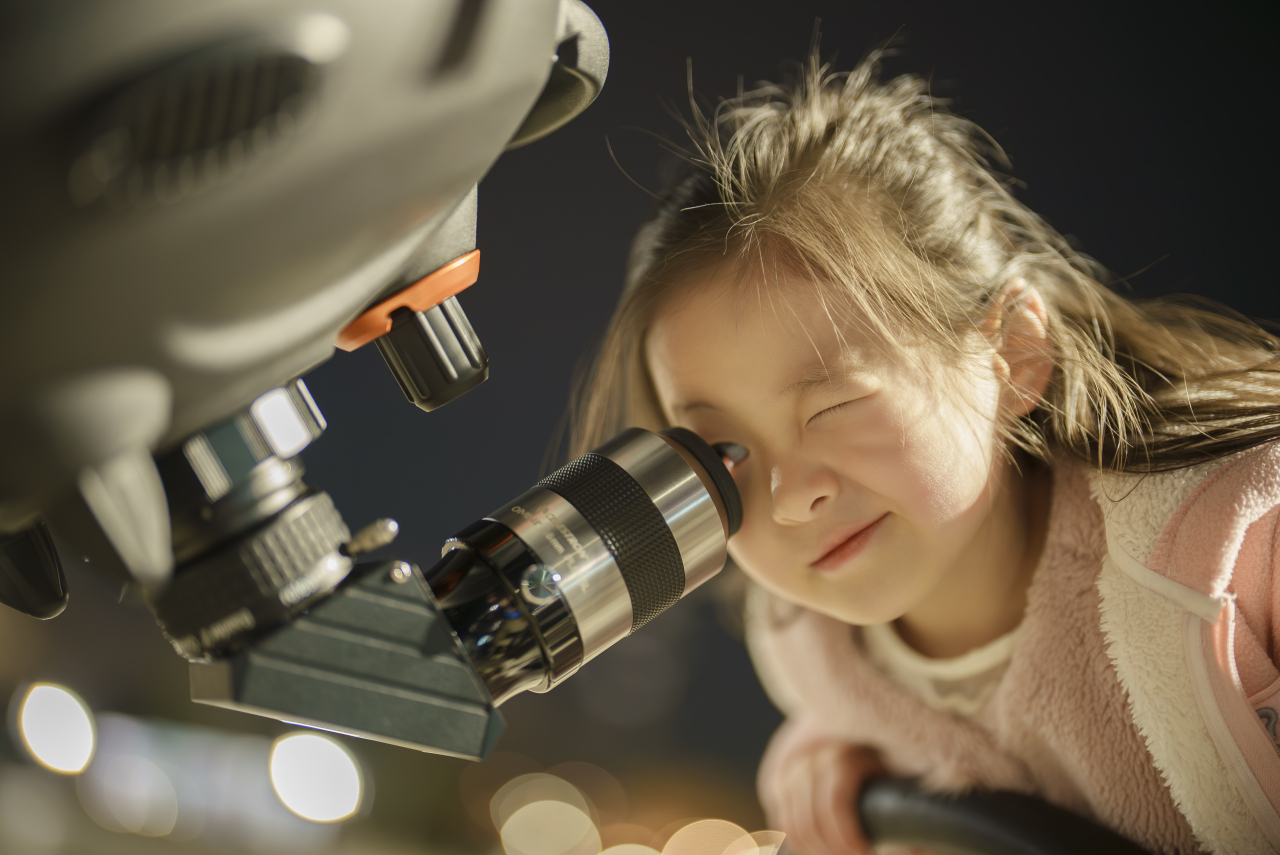
On a Saturday evening in March, Hong Kee-cheon brought his prized telescope out to a park in Ilsan, northwest of Seoul.
He pulled a cart laden with his astronomy gear, weighing over 60 kilograms in total, to the heart of the park, where two people had already set up their more compact telescopes.
“Tonight, Jupiter and its moons grace us," Hong, 52, said, his eyes scanning the skies above, before he began assembling what he affectionately calls his "scope."
By the time he was nearly done, affixing a black cap called a dew shield to his telescope, three more stargazers joined to set up their telescopes.
With Hong’s telescope in the center, the earlier pair and the three newcomers arranged their eyepieces around it in a circle, each spaced about 10 meters apart. The layout made the smaller telescopes appear as if they were moons in orbit around Hong’s more imposing setup.
“Should we queue up to look through it?” a voice came from the group of people who had gathered to watch, intrigued by the unfolding scene.
At Hong’s “Yes,” about a dozen people quickly formed a line.
When everything was finally all set, Jupiter -- a planet over 11 times the size of Earth and 700 million kilometers away from it -- and two of its moons became visible to observers through the lens of the scope.
“It is amazing. I’ve never seen anything like this,” a woman in her 20s exclaimed, after checking out the largest planet in the solar system.
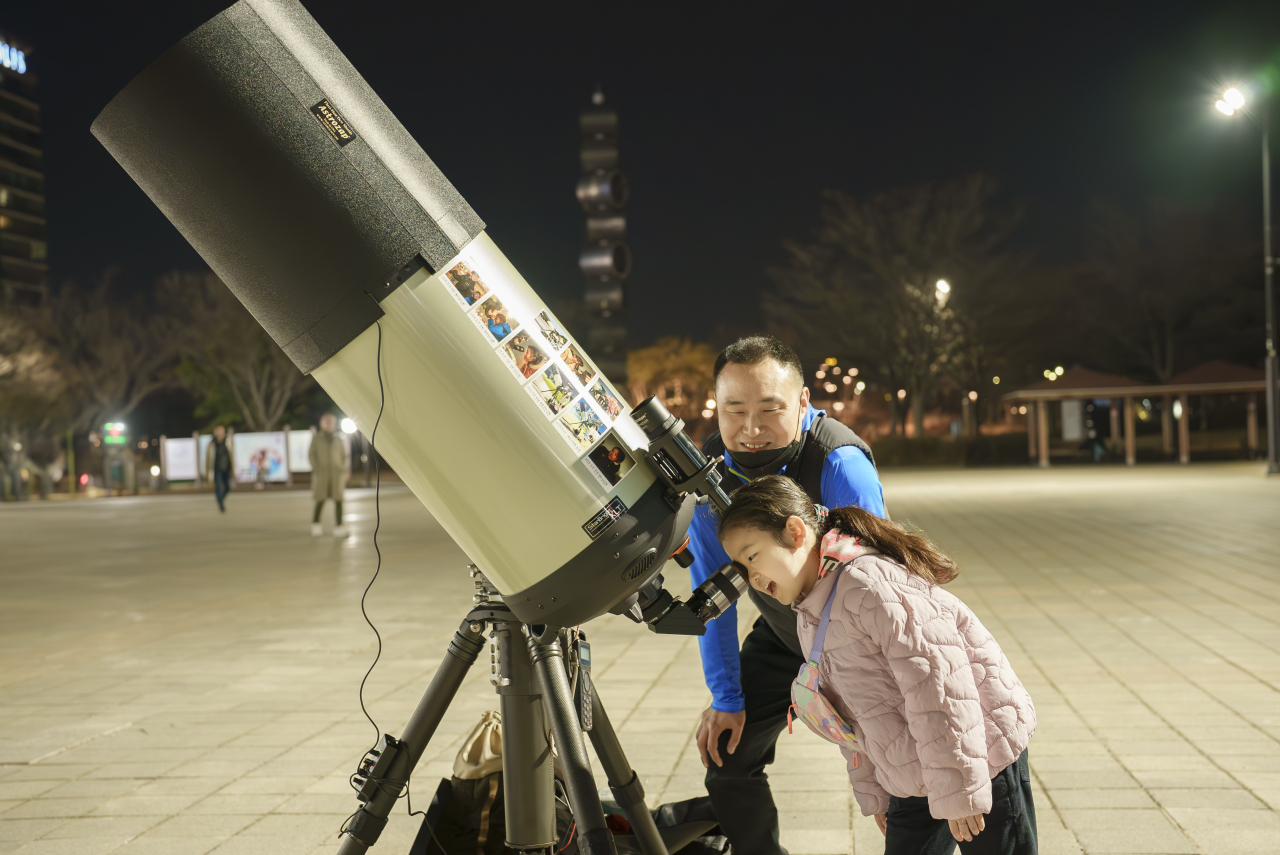
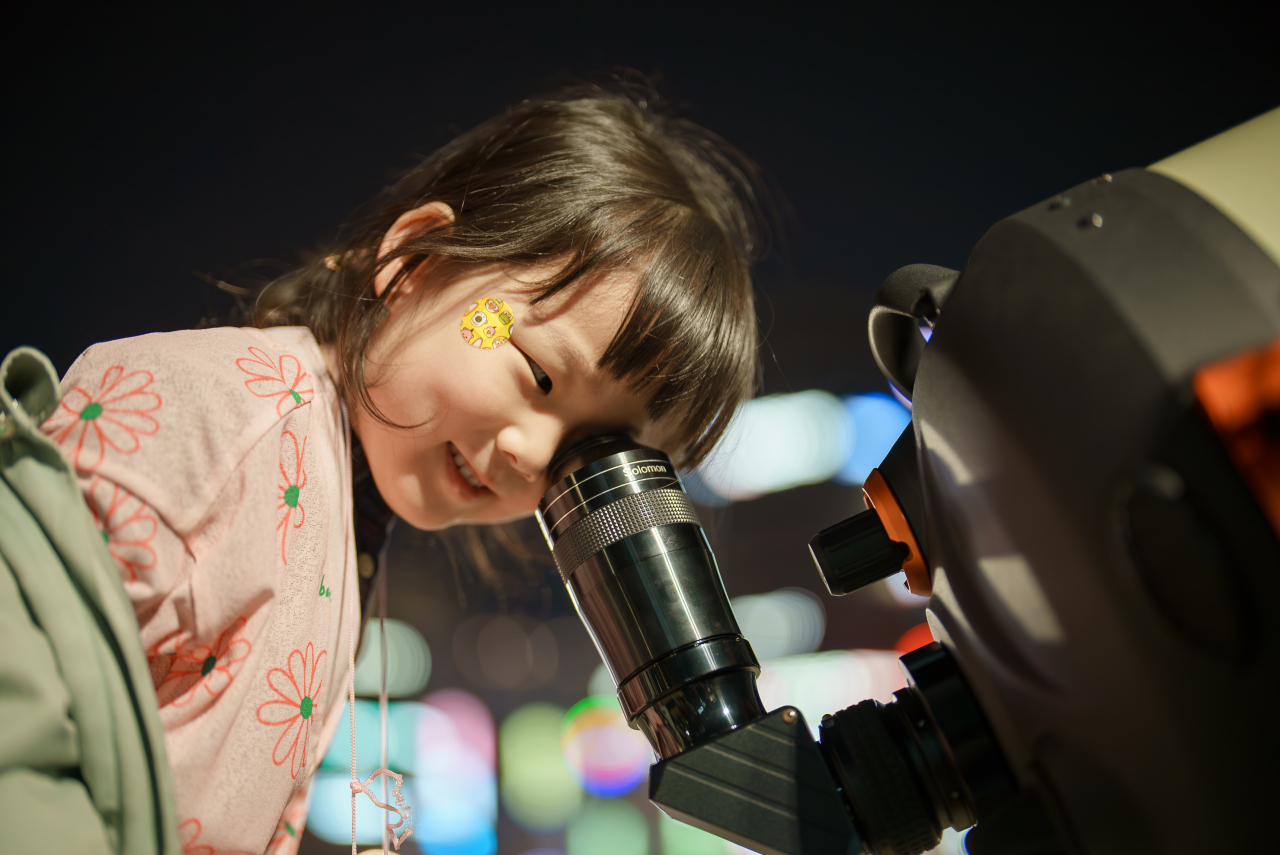
A young girl, appearing to be around 6 or 7, shouted in excitement, “(Jupiter) is cute!”
His curiosity piqued, a man inquired about the value of Hong’s gear.
When Hong revealed the price to be about 35 million won ($26,000), he could not hide his surprise.
As the evening progressed, the line swelled to more than 30 people. A modest crowd also formed around the setups of the five other amateur astronomers, whose telescopes offered a detailed view of the moon’s surface.
Although the March 23 event was pre-announced on Hong’s YouTube channel, “Sidewalk Astronomy,” many seemed to have stumbled upon the free stargazing event. There was a collective sense of childlike joy, with expressions of awe and happiness shared among the gathered observers.
"We queued up by chance and saw Jupiter and the moon," said Jung Mi-yeon, who was with her husband and their seven-year-old daughter.
"It seems like I've lived without having the leisure to look at the stars. But this event sparked my interest in astronomy," she said, adding that she wishes to participate in more such events.
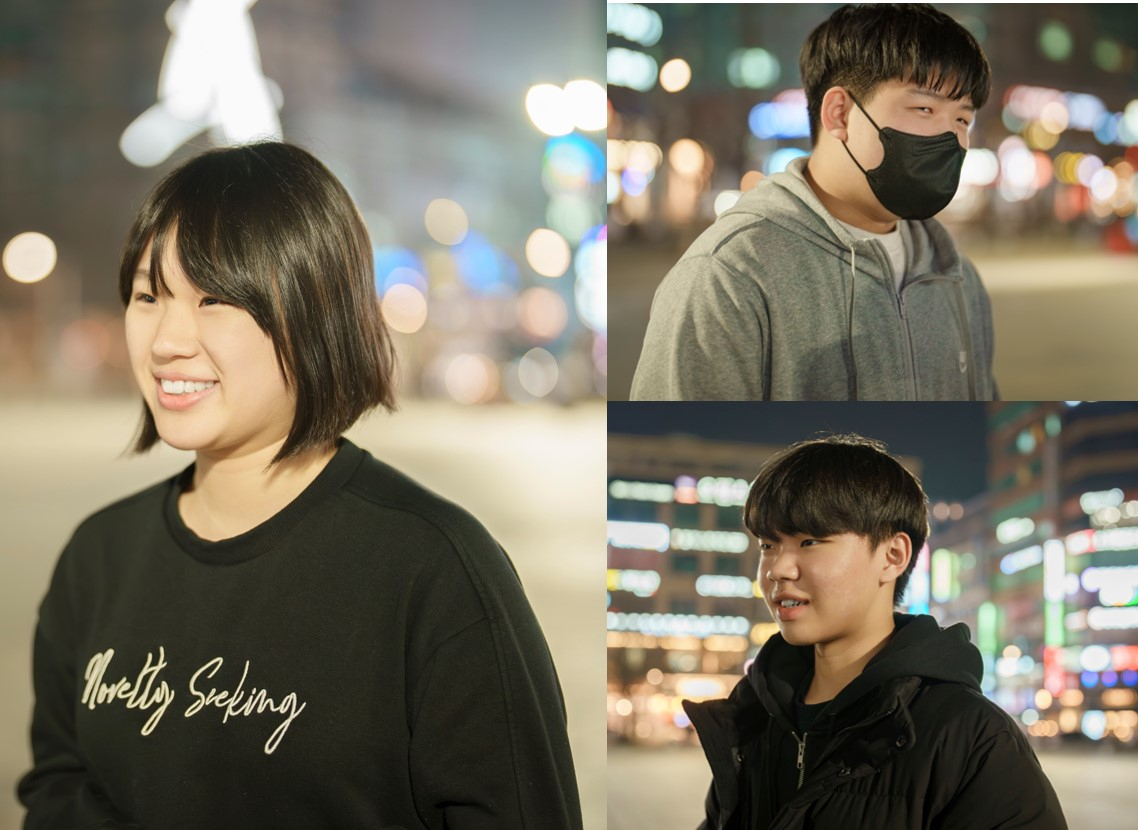
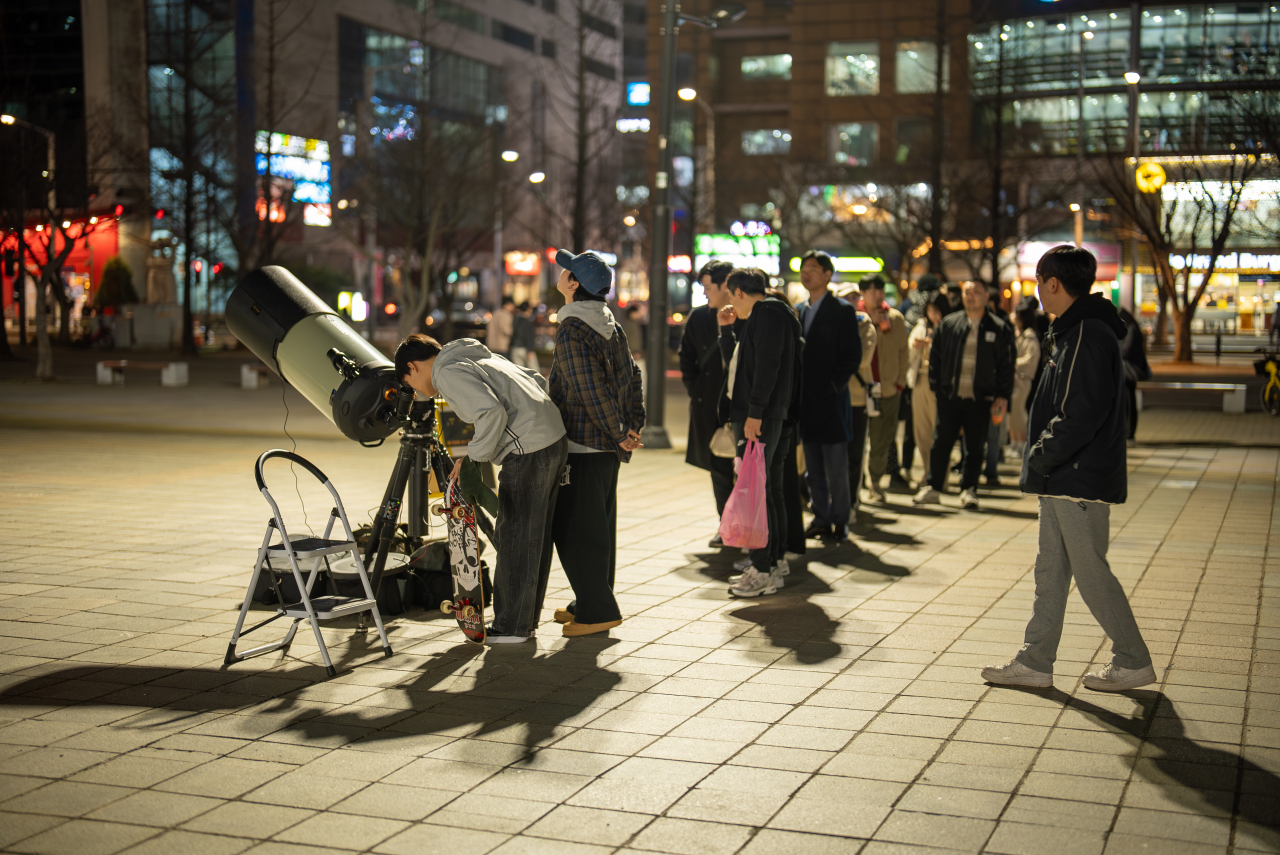
Hong, who took center stage at the March event, runs a small retail business for a living. As a hobby, he doubles as a YouTuber and stargazer dedicated to bringing the wonders of the night sky to a wider audience.
It was in 2021 that Hong started offering free telescope viewings in parks, on streets or wherever crowds might gather, delighting in the joy and wonder these celestial showcases brought to the faces of onlookers.
He was inspired by American amateur astronomer and founder of the San Francisco Sidewalk Astronomers, John Dobson, he said. Dobson invented a portable, low-cost Newtonian reflector telescope in the 1960s. He did not patent the design, making it freely available and enabling anyone to build their own telescope. He would take to the streets to show people the moon, Saturn and Jupiter for free.
"I brought my telescope to Bugak Skyway in Seoul and showed the surface of the moon to people for the first time in May 2021," he said. “After seeing everyone delighted like children at the sight, I started astronomical volunteering in earnest that year."
Hong’s fascination with the stars began during his teenage years, when he gazed for hours in wonder at the night sky, through an old pair of binoculars that once belonged to his grandfather.
Back in the 1990s, his hometown in Yangcheon-gu, Seoul, was far less urbanized than it is today. The sky was darker and had many more stars shining brightly.
“At that time, light pollution was not as severe as today. I could see Andromeda with just the naked eye,” he recalled. The Andromeda Galaxy is one of the few galaxies that can be seen with the naked eye from Earth in areas with minimal light pollution.
"I have fond memories of looking up at the sky and seeing stars," he said.
Hong lamented how Seoul's skies are now bereft of stars due to the incessant glow of signs and digital advertising screens, and how people these days seldom raise their eyes to look at the universe.
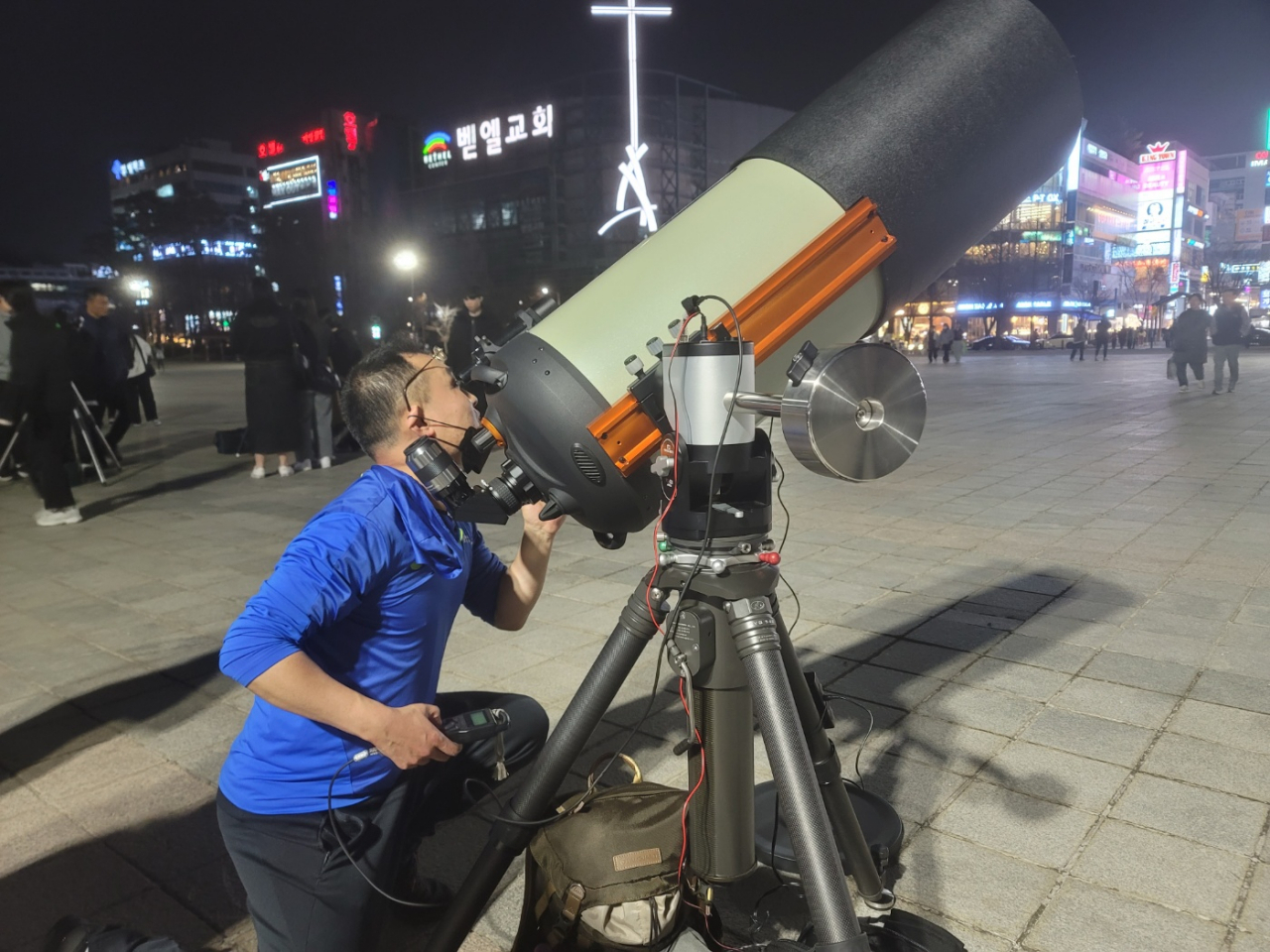
"People are so engrossed in their studies or work that they don’t pause and gaze upwards. I wanted to show them what lies beyond the Earth."
He stressed that stargazing is one of the universal experiences that can bring sheer joy to people from all walks of life, offering a moment of respite -- albeit brief -- from life’s stresses and anxieties.
Hong recalled an older woman who came to a viewing event held in Mok-dong's Paris Park. After seeing Saturn through the lens for the first time, she said, "Oh, I could have died without ever seeing such a thing in my 80 years of life.”
He also spoke of two elementary school-aged brothers who excitedly spent nearly three hours glued to the scope, observing the sun and the moon on Children's Day at Boramae Park in Seoul. On another occasion, a couple, the wife pregnant, came to a park at dawn to observe Saturn and Jupiter. They said it was for “prenatal education.”
Personally, Hong’s favorite celestial object is the Ring Nebula, located in the constellation Lyra, a symbol of summer.
"The first time I found and saw the Ring Nebula, I was so amazed that I still can't forget it," he said.
"The Andromeda Galaxy looks incredibly fancy in photos, but through a telescope, it appears as just a fuzzy cotton blob. However, the Ring Nebula, even in black and white, shows its donut-shaped appearance so vividly clear that I stared at it in awe for a long time."
Hong plans to continue showing stars and planets to people, as his favorite saying is, "The best telescope is the one that is used often."
"I feel happy seeing them enjoy the universe," he said. "The stars are there for everyone."
Standing for living, loving and growing, LLG goes beyond the realm of daily news, exploring the vibrant tapestry of modern life, as told by real people. -- Ed.
![[Weekender] Geeks have never been so chic in Korea](http://res.heraldm.com/phpwas/restmb_idxmake.php?idx=645&simg=/content/image/2024/05/16/20240516050845_0.jpg&u=)
![[News Focus] Mystery deepens after hundreds of cat deaths in S. Korea](http://res.heraldm.com/phpwas/restmb_idxmake.php?idx=645&simg=/content/image/2024/05/17/20240517050800_0.jpg&u=)



![[KH Explains] Why Korea's so tough on short selling](http://res.heraldm.com/phpwas/restmb_idxmake.php?idx=645&simg=/content/image/2024/05/19/20240519050115_0.jpg&u=20240519162247)